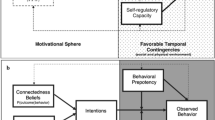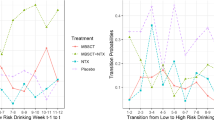Abstract
Adolescent cigarette smoking remains a significant public health problem and a major cause of cardiovascular disease later in life. Understanding the processes underlying adolescent smoking initiation, progression, and cessation may allow for improved interventions in this population for primary prevention of cardiovascular disease. Theoretical models of smoking initiation and relapse suggest that dynamic processes, such as changes in affect state or outcome expectancies, should proximally cause changes in smoking behavior. Ecological momentary assessment (EMA) methods provide an opportunity to examine these types of dynamic processes. EMA involves measuring a smoker’s experiences and behaviors as they are occurring in real time in the natural environment. The results of recent studies that have used EMA to examine adolescent smoking are reviewed in this article. The findings provide important information about how dynamic processes involving affect states and external contexts may influence smoking among adolescents. EMA studies may substantially impact theoretical models of adolescent smoking and future treatment interventions.
Similar content being viewed by others
References and Recommended Reading
Johnston LD, O’Malley PM, Bachman, JG, Schulenberg JE: More good news on teen smoking: rates at or near record lows. Available at http://www.monitoringthefuture.org. Accessed August 8, 2009.
U.S. Department of Health and Human Services: Preventing Tobacco Use Among Young People: A Report of the Surgeon General. Atlanta, GA: U.S. Department of Health and Human Services, Public Health Services, Centers of Disease Control and Prevention, National Center for Chronic Disease Prevention and Health Promotion, Office on Smoking; 1994.
Chassin L, Presson CC, Sherman SJ, Edwards DA: The natural history of cigarette smoking: predicting young-adult smoking outcomes from adolescent smoking patterns. Health Psychol 1990, 9:701–716.
Giovino G, Barker DC, Tworek C, et al.: The National Youth Smoking Cessation Survey. Paper presented at the Addressing Tobacco in Managed Care Conference. Miami, FL; April 2, 2004.
Mermelstein R: Teen smoking cessation. Tob Control 2003, 12(Suppl I):i25–i34.
Sussman S, Sun P: Youth tobacco use cessation: 2008 update. Tob Induc Dis 2009, 5:3.
Colby SM, Gwaltney CJ: Pharmacotherapy for adolescent smoking cessation-commentary. JAMA 2007, 298:2182–2184.
Marlatt GA, Witkiewitz K: Relapse prevention for alcohol and drug problems. In Relapse Prevention. Edited by Marlatt GA, Donovan D. New York, NY: Guilford Press; 2005:1–44.
Mermelstein RJ, Flay BR, Hedeker D, Shiffman S: Individual and contextual risk factors for smoking. Paper presented at Adolescent Brain Development: Vulnerabilities and Opportunities Conference. New York, NY; September 18–20, 2003.
Shiffman S, Stone AA, Hufford MR: Ecological momentary assessment. Annu Rev Clin Psychol 2008, 4:1–32.
Stone AA, Shiffman S, Atienza AA, Nebeling L: The Science of Real-Time Data Capture: Self-Reports in Health Research. New York: Oxford; 2007.
Stone AA, Shiffman S: Ecological momentary assessment (EMA) in behavioral medicine. Ann Behav Med 1994, 16:199–202.
Gwaltney CJ, Bartolomei R, Colby SM, Kahler CW: Ecological momentary assessment of adolescent smoking cessation: a feasibility study. Nicotine Tob Res 2008, 10:1185–1190.
Shiffman S, Waters A: Negative affect and smoking lapses: a prospective analysis. J Consult Clin Psychol 2004, 72:192–201.
Shiffman S, Gwaltney CJ, Balabanis MH, et al.: Immediate antecedents of cigarette smoking: An analysis from ecological momentary assessment. J Abnorm Psychol 2002, 111:531–545.
Gwaltney CJ, Shiffman S, Balabanis MH, Paty JA: Dynamic self-efficacy and outcome expectancies: Prediction of smoking lapse and relapse. J Abnorm Psychol 2005, 114:661–675.
McCarthy DE, Piasecki TM, Lawrence DL, et al.: Psychological mediators of bupropion sustained-release treatment for smoking cessation. Addiction 2008, 103:1521–1533.
Kassel JD, Stroud LR, Paronis CA: Smoking, stress, and negative affect: correlation, causation, and context across stages of smoking. Psychol Bull 2003, 129:270–304.
Weinstein SM, Mermelstein R, Shiffman S, Flay B: Mood variability and cigarette smoking escalation among adolescents. Psychol Addict Behav 2008, 22:504–513.
Henker B, Whalen C, Jamner L, Delfino R: Anxiety, affect, and activity in teenagers: monitoring daily life with electronic diaries. Child Adolesc Psychiatry 2002, 41:660–670.
Hedeker D, Mermelstein R, Berbaum M, Campbell R: Modeling mood variation associated with smoking: an application of a heterogeneous mixed-effects model for analysis of ecological momentary assessment. Addiction 2009, 104:297–307.
Kenford SL, Fiore MC, Jorenby DE, et al.: Predicting smoking cessation. Who will quit with and without the nicotine patch. JAMA 1994, 271:589–594.
Shiffman S, Paty J, Gnys M, et al.: First lapses to smoking: within subject analysis of real time reports. J Consult Clin Psychol 1996, 64:366–379.
Van Zundert RM, Nijhof LM, Engels RC: Testing social cognitive theory as a theoretical framework to predict smoking relapse among daily smoking adolescents. Addict Behav 2009, 34:281–286.
Ferguson SG, Shiffman S, Gwaltney CJ: Does reducing withdrawal severity mediate nicotine patch efficacy? A randomized clinical trial. J Consult Clin Psychol 2006, 74:1153–1161.
Author information
Authors and Affiliations
Corresponding author
Rights and permissions
About this article
Cite this article
Gwaltney, C.J., Emerson, J. Studying adolescent smoking in real time: Use of ecological momentary assessment. Curr Cardio Risk Rep 3, 398–402 (2009). https://doi.org/10.1007/s12170-009-0059-y
Published:
Issue Date:
DOI: https://doi.org/10.1007/s12170-009-0059-y




